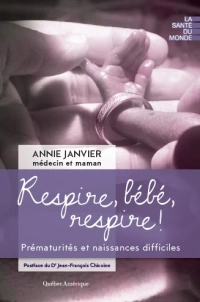This post is not based on a new publication, but is stimulated by the introduction of an update to our nutritional protocol in our NICU. Since the previous update of the protocol we have been fortifying breast milk early. We order the fortification (or rather the protocol orders it) when a baby is receiving 25 mL total of breast milk per day. We do this because the packets of fortifier that we use are designed to be added 1 mL to each 25 mL of milk, and we prepare feeds for 24 hours at a time. This is done by dietetic technicians in a “milk kitchen” which is part of our new NICU. We don’t want to throw milk away, so we decided to start fortification when the babies get 25 mL total per day, which is at feeds of 2mL q2h for the smaller babies or 3 mL q3H for the larger ones. For a 500g baby in that case they will be receiving 50 mL/kg/day of feeds, and obviously for larger babies it is started sooner on a mL/kg/day basis.
Many people that we present our protocol to are surprised by the early introduction of fortifier, which, in our observational study of the impact of our feeding protocol, was well tolerated, and the new protocol was associated with a small reduction in necrotizing enterocolitis, but with better nutritional outcomes. We are maintaining the same timing of introduction in the new version of the protocol, but in preparation we reviewed the literature to make sure that what we were already doing was evidence based, and to direct any changes in the protocol.
What data exist about the effects of adding fortifier (bovine milk protein based) to human milk on clinical outcomes? And specifically data about the timing.
There is a Cochrane review of the impact overall of bovine, multicomponent, milk fortifiers, when added to maternal milk, that shows no adverse impact on clinically important outcomes, in particular in necrotising enterocolitis. The latest version of that review dates from 2016.
More recently there has been much interest in human milk only diets, which use human milk based fortifiers added to maternal or donor milk. The evidence to support their impact is currently weak.
The 2 randomized trials using Prolacta products made the following comparisons:
1 Cristofalo et al. Donor milk with human milk based fortifier was compared to preterm formula. This was a small study with an extremely high frequency of NEC among the formula babies (21%), and a lower frequency in the donor milk arm.
2 Sullivan et al. Mother’s milk with supplements of donor milk as required and fortification with human milk based fortifier starting at 40 mL/kg/d, compared to the same regime but with fortifier introduced at 100 mL/kg/d. The 3rd randomized group was mothers milk with supplements of artifical formula as required with the maternal milk fortified with bovine fortifier introduced at 100 mL/kg/d. That study showed a higher frequency of NEC in the formula supplements/bovine fortifier group, who received on average 20% of their milk as artificial formula.
The lower incidence of NEC in these 2 trials may have nothing to do with the nature of the fortifier, as it was not the only difference between the groups.
What I think does not yet exist in the published literature is a trial using mothers milk with donor milk as required in both arms, with one arm getting a human milk based fortifier and the other arm getting a bovine milk based fortifier. There has been such a trial, from the group based in Toronto, part of their OptiMom program of research. It was presented at last years PAS, but has not been published yet. As I remember the results from the presentation last year, there was no difference in NEC between the groups. But, as the abstracts from last year are no longer available I can’t check on that.
I actually just found another trial which is probably relevant, but I don’t have the full text yet, Adhisivam B, et al. Does fortification of pasteurized donor human milk increase the incidence of necrotizing enterocolitis among preterm neonates? A randomized controlled trial. The journal of maternal-fetal & neonatal medicine: 2018:1-6. It seems to be an RCT with both groups receiving donor milk, and only one group being fortifed, it looks like there were 40 babies per group, with 1 NEC in the fortified group, and 3 in the non-fortified. I will update this post when I get the full text and get more details.
You will remember that the OptiMom trials are from the same group in Toronto that performed the Domino randomized controlled trial, in that study mother’s milk was supplemented when required with either donor human milk or with artificial formula. The results showed an important reduction in NEC, from 11% down to 4% with donor human milk supplementation. About 17% of the babies in each group never received a supplement at all, as they only ever got their mother’s milk, among those who did get a supplement, on average they received about 40% of their feeds as a supplement. Those in the donor human milk group had a bovine-protein-based fortifier used for all their feeds when they reached 125 mL/kg/d of enteral feeds. The formula supplementation group had their mother’s own milk fortified with the same fortifier.
Avoiding formula as a supplement for at-risk babies seems therefore to reduce NEC, and that could be the reason for the results in the two “Prolacta” trials that I mentioned above. There is no clear evidence that bovine protein based fortifiers increase NEC, in a recent study with many small babies and using modern neonatal care, but donor milk appears to prevent NEC. This is similar of course to the older data from the Cambridge studies of Alan Lucas which did not use a breast milk fortifier, those trials were first published in the early 1980’s.
A systematic review published last year examined all the evidence they could find for the timing of the introduction of fortifiers, one of the trials they included was the trial of human milk fortification using human-milk-based fortifier (Sullivan) above. The other prospective trial was this one Shah SD, et al: Early versus Delayed Human Milk Fortification in Very Low Birth Weight Infants-A Randomized Controlled Trial. The Journal of pediatrics 2016;174:126-131 e121. of 100 VLBW babies comparing the introduction of fortifier at 20 mL/kg/day to 100 mL/kg/day, that found no adverse effect of earlier fortification, but an increase in protein intake with earlier fortification. The other studies they found in the systematic review were observational and were reassuring also. There has been since then another RCT of 80 LBW babies comparing starting fortification with the first feed to waiting until 75 mL/kg/d, which was not included in the systematic review, Alizadeh Taheri P, et al. Is early breast milk fortification more effective in preterm infants?: a clinical trial. Journal of perinatal medicine. 2016, the babies were of 28 to 34 weeks gestation. They showed no adverse effects of earlier supplementation.
The ADEPT trial from the UK compared starting feeds early (24-48h) to starting them late (after 5 days npo) in preterm babies (<35 weeks) with growth restriction and abnormal antenatal umbilical artery dopplers. Fortification of the breast milk was suggested in both groups once the babies were on full feeds (150 mL/kg/day) although I can’t find in the results what proportion of babies had fortifier or when it was exactly added. The early feeding group reached full feeds 3 days earlier. There was no difference in NEC (stage 2 or 3: 8%). In the subgroup of 83 babies 83 under 29 weeks gestation, the incidence of stage 2 or 3 NEC was 18%. and was also not different between the groups. The early feeding group presumably had their fortification started earlier in terms of the day of life when it was started, but what the difference was is not reported. The differences between the outcomes of the 2 groups were that the early group reached full feeds sooner, had less TPN and less cholestasis and had their central lines taken out sooner, had less postnatal growth restriction and had less culture positive late-onset sepsis (28% vs 35%, not conventionally “statistically significant”, RR 0.8, 95%CI 0.6 to 1.08).
Being critical then, I guess you could say there are no robust data to determine at what point breast milk supplementation with currently available cow’s milk protein based fortifiers should be introduced, but the limited data available shows no evidence of an adverse effect of introducing them earlier. Earlier introduction does allow for greater calorie and protein intakes during the transition from intravenous to enteral nutrition. With earlier fortification it is possible to reach the desired 4 to 4.5 g/kg/d of protein intake sooner; there are conflicting data about the benefits of increasing to that level, but I think that overall higher protein intakes in that range seem to improve fat-free mass, and probably body length by the time of discharge.









I’m Comprehensive Nurse But NICU Trianer. I Have Some Resarch By Neonate From Health Center. So How Can I Find?
Hi, I am sorry that I did not completely understand your answer, you could send me a message privately at keith.barrington@umontreal.caé
Hi Keith,
Dr O’Connor’s study was just published in Am J Clin Nutr 2018;9:1-9. Nutrient enrichment of human milk with human & bovine milk-based fortifier for infants born weighing <1250g: a RCT.
Hi, do you have a reference for this ‘A systematic review published last year examined all the evidence they could find for the timing of the introduction of fortifiers’? thank you
Thanks, I usually put a link to all references I mention, don’t know why I didn’t this time. The source was “Mimouni FB, et al. The Use of Multinutrient Human Milk Fortifiers in Preterm Infants: A Systematic Review of Unanswered Questions. Clin Perinatol. 2017;44(1):173-8”.
https://www.ncbi.nlm.nih.gov/pubmed/28159204